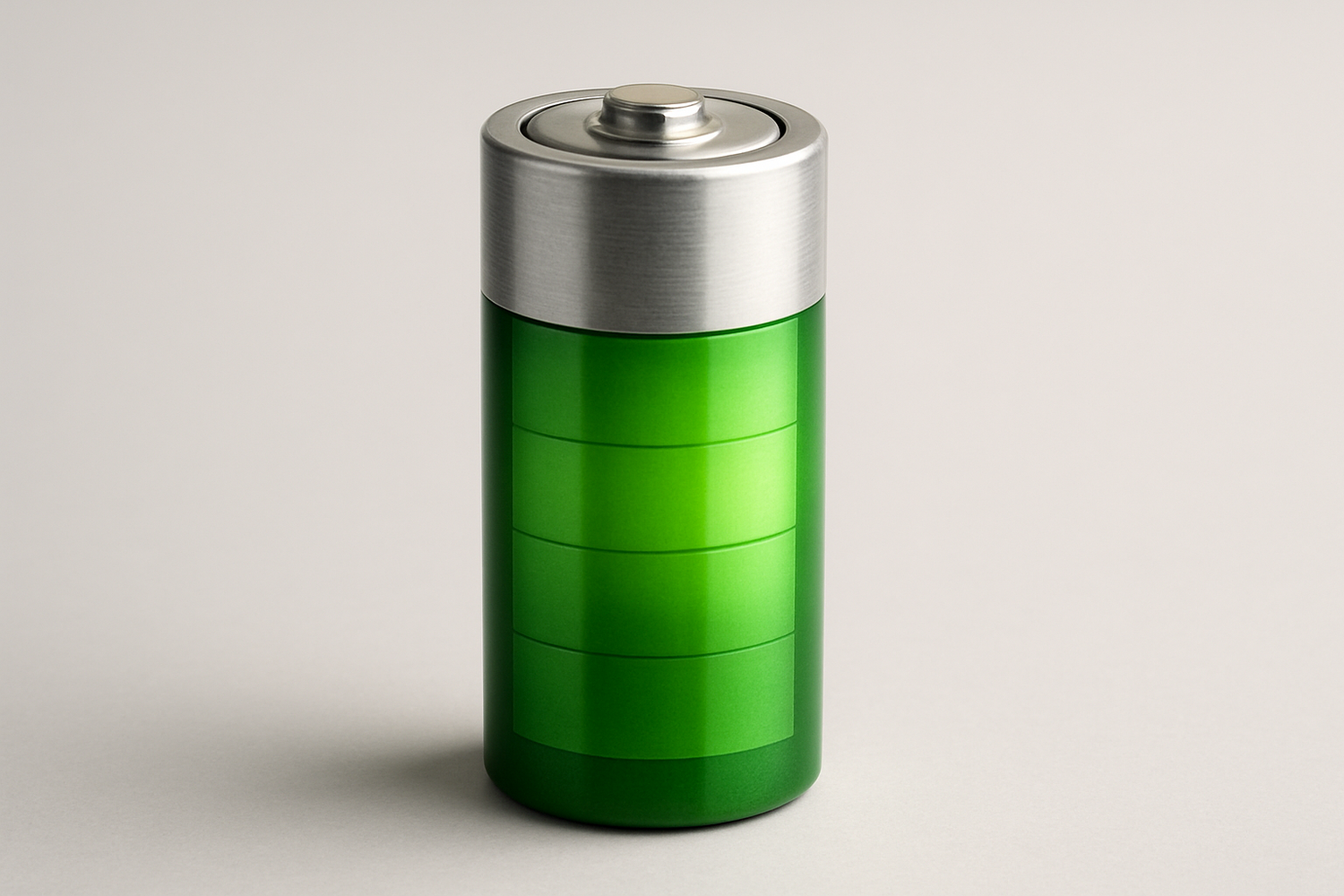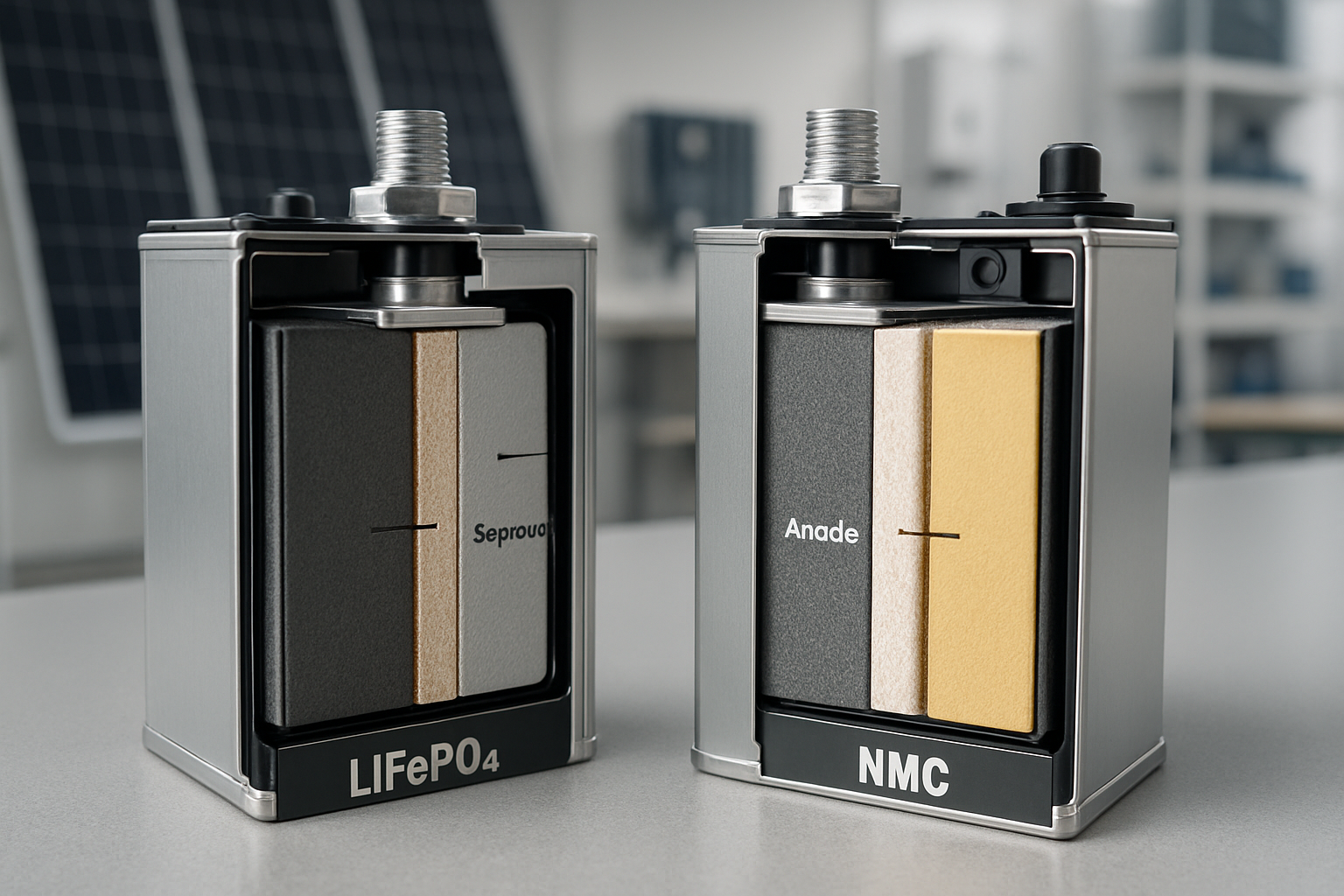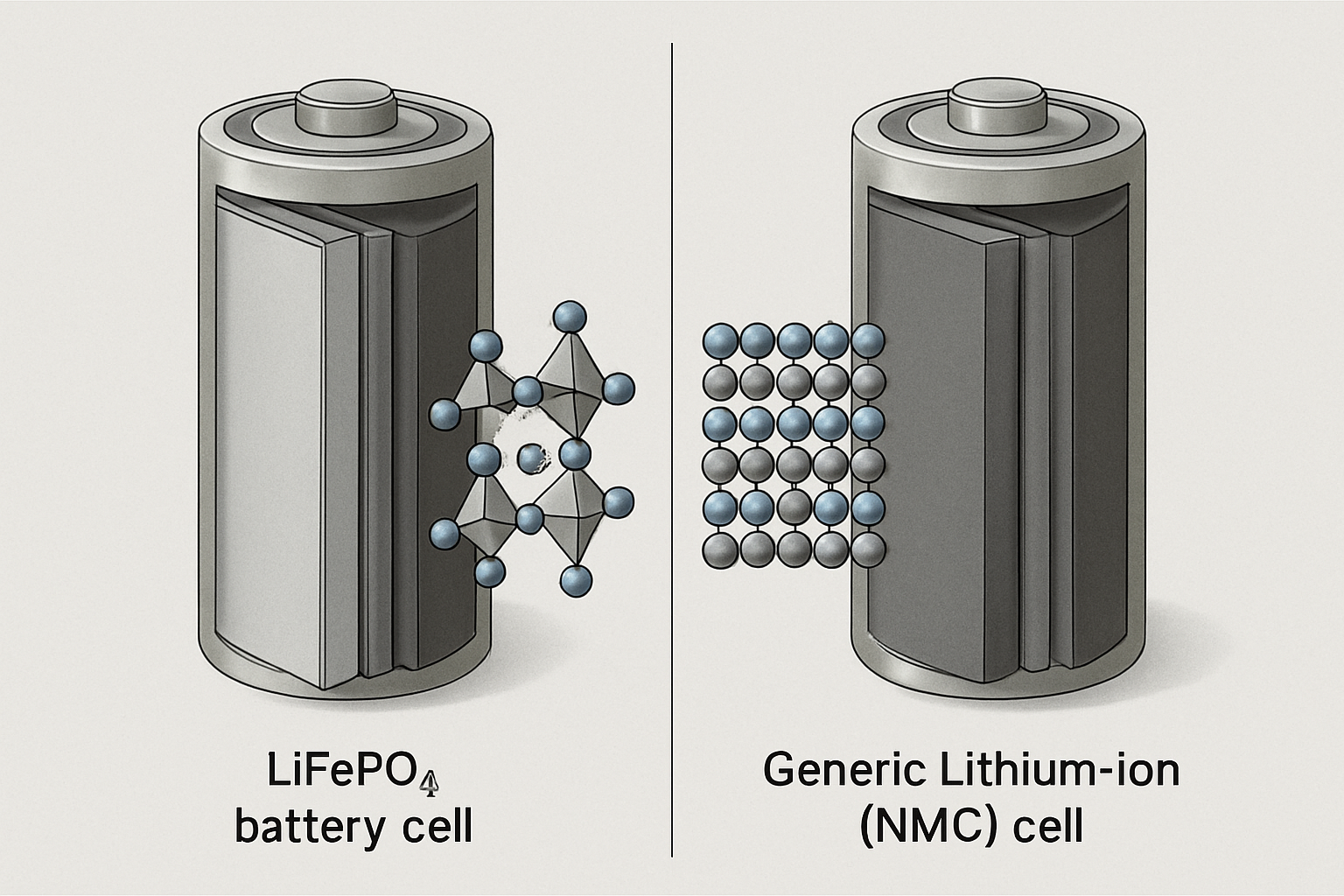When choosing a battery for a solar energy storage system, the initial price tag is often the first thing people notice. However, a battery's true value is revealed over its entire operational life. Lithium Iron Phosphate (LiFePO4) batteries are gaining attention not just for their performance, but for their exceptional long-term value. Looking beyond the upfront cost to the total cost of ownership (TCO) shows why this chemistry is a leading choice for achieving energy independence.
Understanding the Upfront Cost
The initial purchase price of any battery is influenced by several factors, from raw materials to the sophistication of its internal electronics. A clear understanding of these elements helps in making an informed comparison between different lithium-ion technologies.
What Drives the Initial Price?
The cost of a LiFePO4 battery is shaped by three main components. First are the raw materials. LiFePO4 chemistry uses iron and phosphate, which are more abundant and less expensive than the cobalt and nickel used in other lithium-ion batteries like Nickel Manganese Cobalt (NMC). Second is the manufacturing process. While lithium-ion battery production is complex, advancements are helping to lower costs. According to the International Energy Agency (IEA), battery pack prices saw a significant drop in recent years due to resolving supply chain issues and decreasing raw material costs. Finally, the Battery Management System (BMS) is a critical component that ensures safety and longevity by monitoring and balancing the cells. A high-quality BMS adds to the initial cost but is essential for reliable, long-term operation.
A Direct Cost Comparison: LiFePO4 vs. NMC
Historically, NMC batteries have been common in portable electronics and some electric vehicles due to their high energy density. However, for stationary energy storage, the priorities shift to safety, lifespan, and cost-effectiveness. LiFePO4 batteries are often more competitive in price per kilowatt-hour (kWh). The absence of costly and ethically concerning materials like cobalt gives LiFePO4 a significant advantage in price stability and accessibility. As global production scales up, the cost of LiFePO4 technology is expected to continue its downward trend, making it an even more attractive option.
| Feature | LiFePO4 Battery | NMC Battery |
|---|---|---|
| Typical Upfront Cost per kWh | $70 - $300 | $100 - $600 |
| Primary Cathode Materials | Iron, Phosphate | Nickel, Manganese, Cobalt |
| Primary Advantage | Safety, Lifespan, Cost | Energy Density |
Disclaimer: Prices are estimates and can vary based on manufacturer, capacity, and market conditions.
The Critical Role of Lifespan and Cycle Life
A battery's lifespan is arguably the most important factor in determining its overall value. A lower-cost battery that needs frequent replacement will ultimately be more expensive than a durable battery with a higher initial price.
Defining Cycle Life and Depth of Discharge
A cycle life refers to the number of full charge and discharge cycles a battery can endure before its capacity drops to a certain percentage of its original rating, typically 80%. Closely related is the Depth of Discharge (DoD), which is the percentage of the battery's capacity that is used in each cycle. For instance, discharging a 10 kWh battery to 2 kWh means an 80% DoD. The relationship is inverse: a higher DoD puts more stress on the battery, resulting in a shorter cycle life. Maintaining a shallower DoD can significantly extend a battery's operational lifespan.
LiFePO4's Longevity Advantage
LiFePO4 batteries excel in longevity. They can typically deliver between 3,000 to 7,000 cycles at an 80% DoD. In contrast, many NMC batteries offer around 1,000 to 2,000 cycles under similar conditions. This durability means a LiFePO4 battery can last for more than a decade in a typical solar energy storage application, providing reliable power day after day. This extended service life makes them a fit-and-forget solution for homeowners and businesses seeking long-term energy security.
Calculating the Total Cost of Ownership (TCO)
The TCO provides a comprehensive view of a battery's value by considering not just the purchase price but also its performance over time. This calculation reveals the true cost per kWh of energy the battery will deliver throughout its life.
The Formula for Real Value
A simplified way to calculate the TCO is to divide the initial cost by the total energy the battery is expected to deliver. The total energy output is a product of the battery's capacity (in kWh), its cycle life, and the DoD.
TCO (Cost per kWh) = Initial Cost / (Capacity × Cycle Life × DoD)
This metric, often called the Levelized Cost of Storage (LCOS), helps compare different batteries on an equal footing, regardless of their initial price tags.
A Practical Example
Let's compare two hypothetical 10 kWh batteries to see how TCO works in practice. For a deeper look at how these metrics impact overall system efficiency, the ultimate reference on solar storage performance provides detailed benchmarks.
| Metric | 10 kWh LiFePO4 Battery | 10 kWh NMC Battery |
|---|---|---|
| Initial Cost | $3,000 | $5,000 |
| Cycle Life (at 80% DoD) | 5,000 cycles | 1,500 cycles |
| Depth of Discharge (DoD) | 80% | 80% |
| Total Energy Delivered | 10 kWh × 5,000 × 0.80 = 40,000 kWh | 10 kWh × 1,500 × 0.80 = 12,000 kWh |
| Cost per Delivered kWh | $3,000 / 40,000 kWh = $0.075 | $5,000 / 12,000 kWh = $0.417 |
Disclaimer: This calculation is for illustrative purposes and does not constitute financial advice. Actual performance may vary.
As the table shows, the LiFePO4 battery delivers energy at a fraction of the cost of the NMC battery over its lifespan, making it the far superior long-term investment despite any potential differences in initial cost.
Beyond the Numbers: Safety and Performance
While cost and lifespan are critical, other performance characteristics like safety and reliability are equally important. LiFePO4 chemistry offers significant advantages in these areas.
The Inherent Safety of LiFePO4 Chemistry
Safety is a paramount concern for home energy storage. LiFePO4 batteries have a very stable chemical structure. The phosphate-based cathode is less prone to thermal runaway, a dangerous condition where a battery overheats uncontrollably. LiFePO4 batteries can withstand higher temperatures before becoming unstable, making them one of the safest lithium-ion options available. This stability is recognized by safety standards organizations, and as the U.S. Department of Energy's Energy Storage Safety Strategic Plan outlines, robust safety validation is key to building reliable energy infrastructure.
Consistent and Reliable Performance
LiFePO4 batteries provide a very flat voltage discharge curve, which means they deliver consistent power output until they are nearly empty. This is beneficial for appliances that require stable voltage. They also perform well across a wider range of operating temperatures compared to other lithium-ion chemistries, ensuring reliable operation in various climates. This combination of safety and steady performance makes LiFePO4 an ideal choice for residential and off-grid solar applications.
Making the Right Investment for Energy Independence
Choosing a battery is a significant decision. While the upfront cost is an important consideration, it doesn't tell the whole story. The true value of a LiFePO4 battery emerges when you consider its long lifespan, high cycle count, and superior safety profile. By calculating the total cost of ownership, it becomes clear that LiFePO4 technology offers a more economical and reliable path to energy independence. It is an investment in long-term performance, peace of mind, and sustainable energy for years to come.
Frequently Asked Questions
Is a LiFePO4 battery always more expensive upfront?
Not always. Due to the use of more abundant materials and scaling manufacturing, LiFePO4 battery prices have become very competitive and are sometimes lower than other lithium-ion chemistries. The key is to compare the cost per cycle, not just the initial purchase price.
How does temperature affect LiFePO4 battery lifespan?
LiFePO4 batteries operate efficiently across a broad temperature range. However, like all batteries, extreme heat or cold can affect performance and accelerate degradation. A quality Battery Management System (BMS) is crucial for regulating temperature and protecting the battery's health.
Can I use a LiFePO4 battery for my off-grid solar system?
Absolutely. Their long cycle life, ability to handle deep discharges, and inherent safety make LiFePO4 batteries an excellent choice for off-grid solar solutions. They provide the reliability and durability needed for homes, farms, and cabins that depend on a consistent power supply.





Leave a comment
All comments are moderated before being published.
This site is protected by hCaptcha and the hCaptcha Privacy Policy and Terms of Service apply.